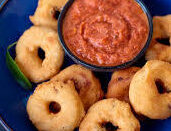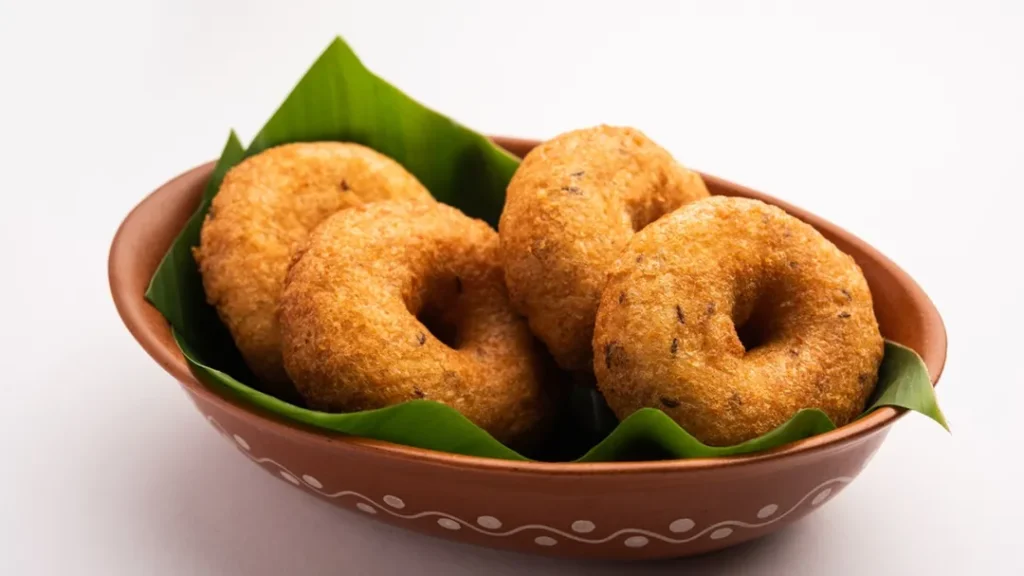Discover why vadas have a hole in the centre. Learn the traditional reason behind this unique shape and how it helps in perfect frying.
You’re not the only person who has ever eaten a vada and questioned why it has a hole in the middle. Many of us appreciate this tasty food without understanding why it has such a unique shape. Although the hole can appear to be a stylistic decision, it actually has a significant impact on the vada’s cooking method.

The True Cause of the Hole
Vadas are typically rather thick, particularly the South Indian minapa vadas (urad dal vadas). When they are fried without a hole, the inside frequently stays raw while the outside cooks rapidly. The vada is cooked thoroughly and evenly, with a crispy exterior and a soft interior thanks to the hole that lets hot oil reach both the outer and inner surfaces. This method of cooking is comparable to that of doughnuts.
The vada’s surface area is expanded by making a hole. This shortens the cooking time and enhances the texture by enabling oil to seep deeper into the batter. The whole vada cooks more evenly and quickly, giving it a well-cooked center and a golden, crunchy outside.
Extra Advantages Of The Hole Stability While Frying: The vada’s shape is preserved during deep-frying thanks to the hole.
Oil Drainage: It makes it easier for extra oil to escape, keeping the vada from getting overly oily.
Even Texture: When heated evenly, the outside stays crispy and the inside stays soft.

It’s Not Just a Shape It’s Essential for Cooking
Therefore, keep in mind that vada is more than just a round snack with a hole the next time you bite into one. That hole is an ingenious culinary technique that guarantees consistently excellent cooking, flavor, and texture.





